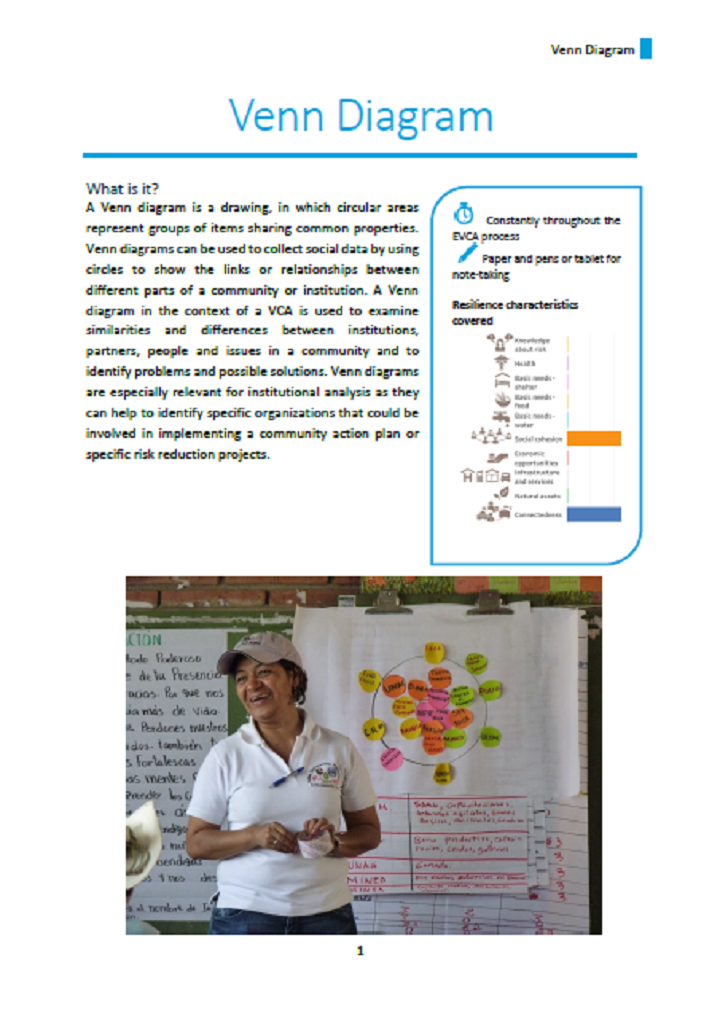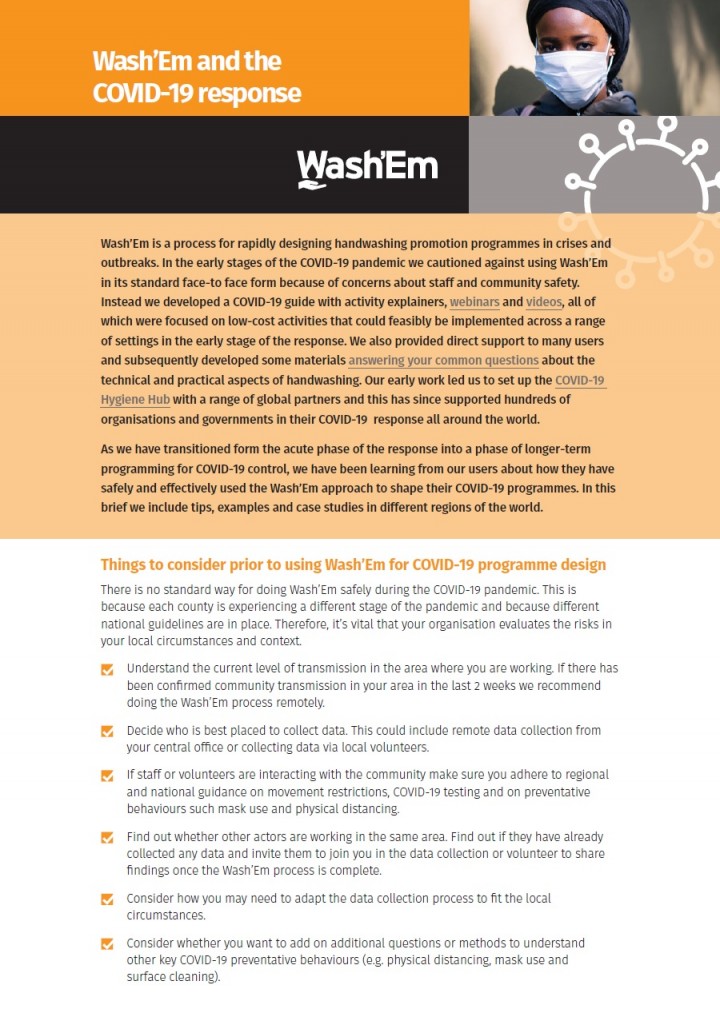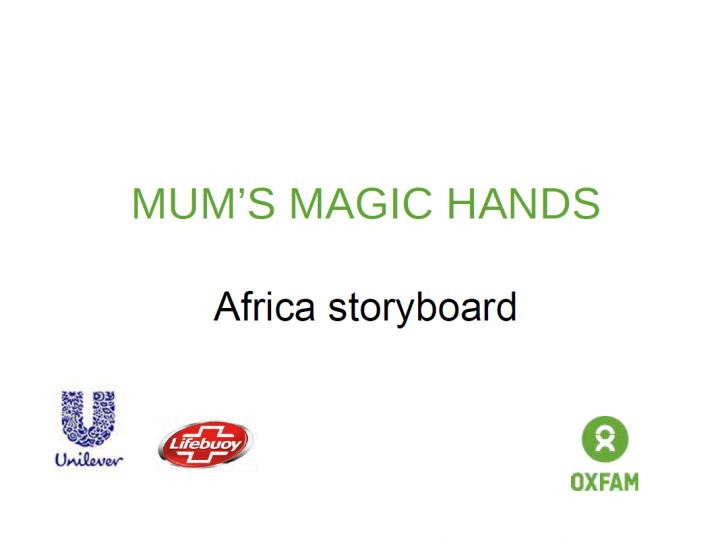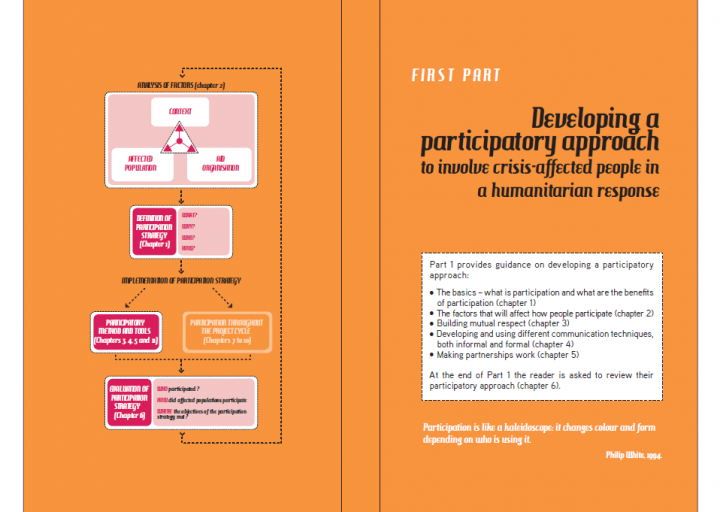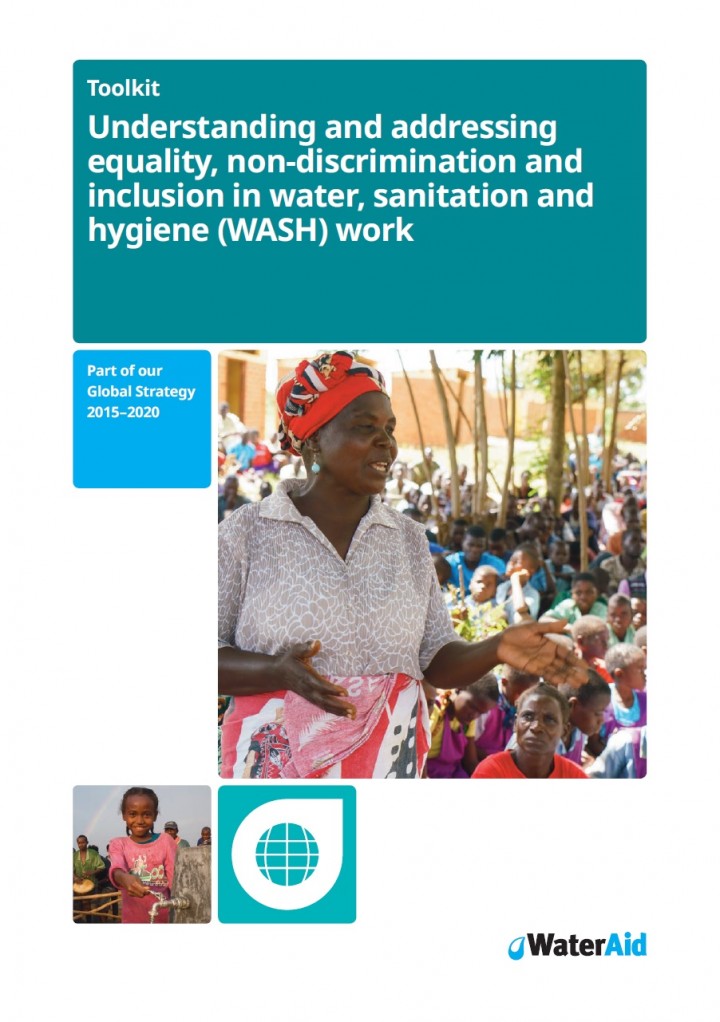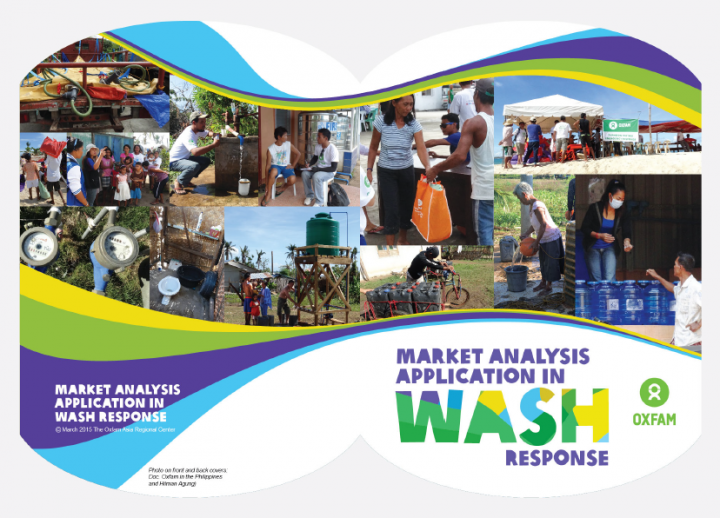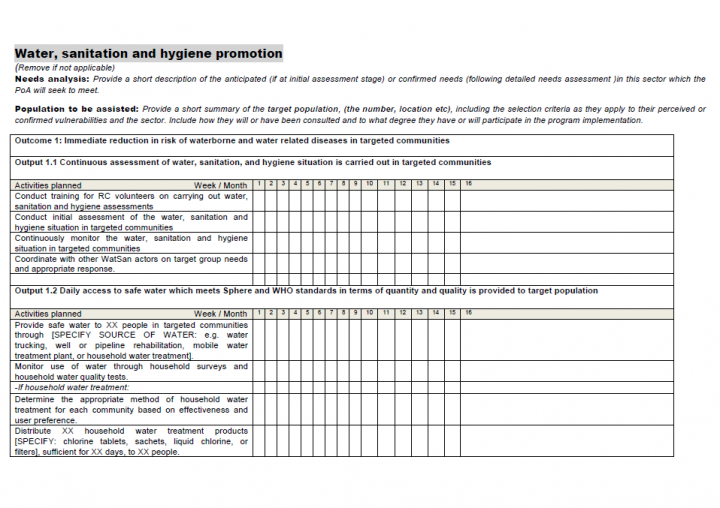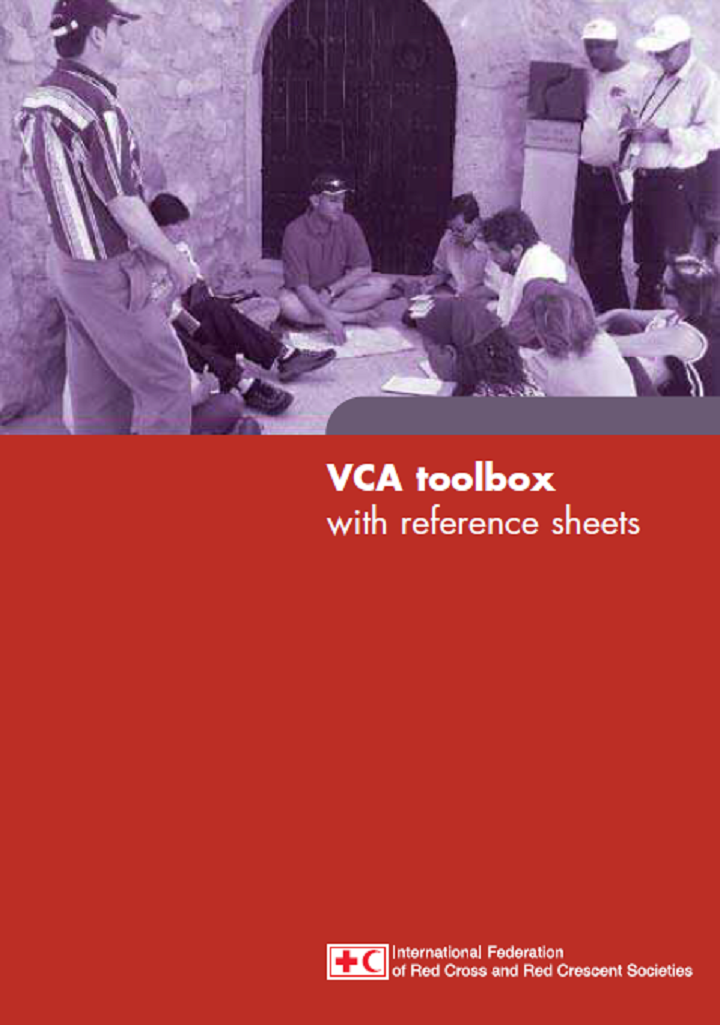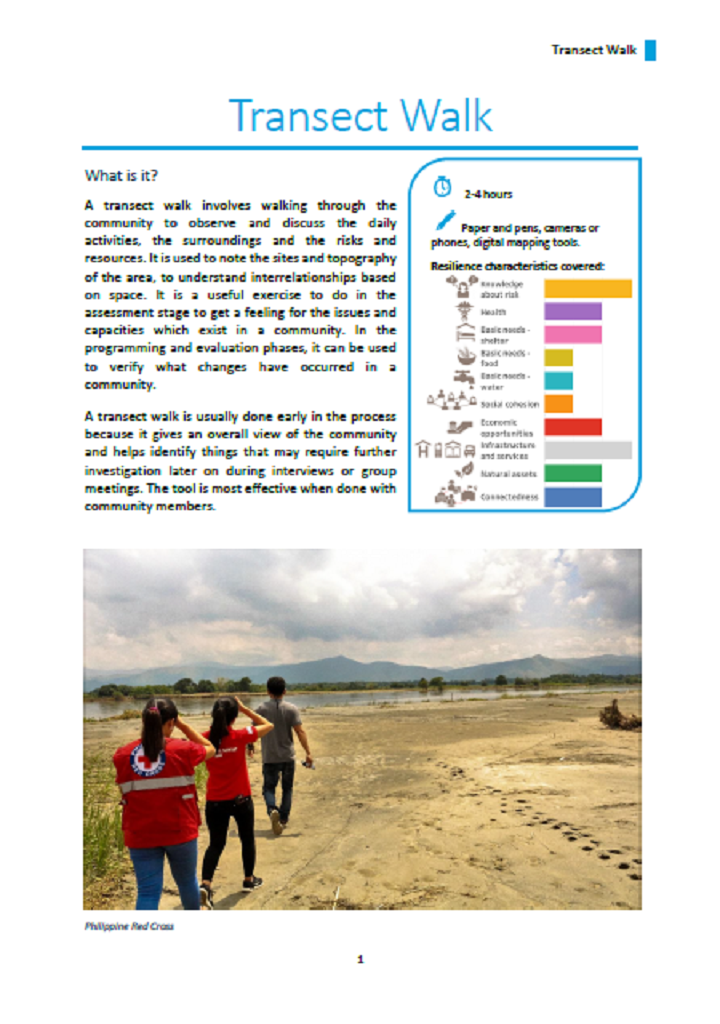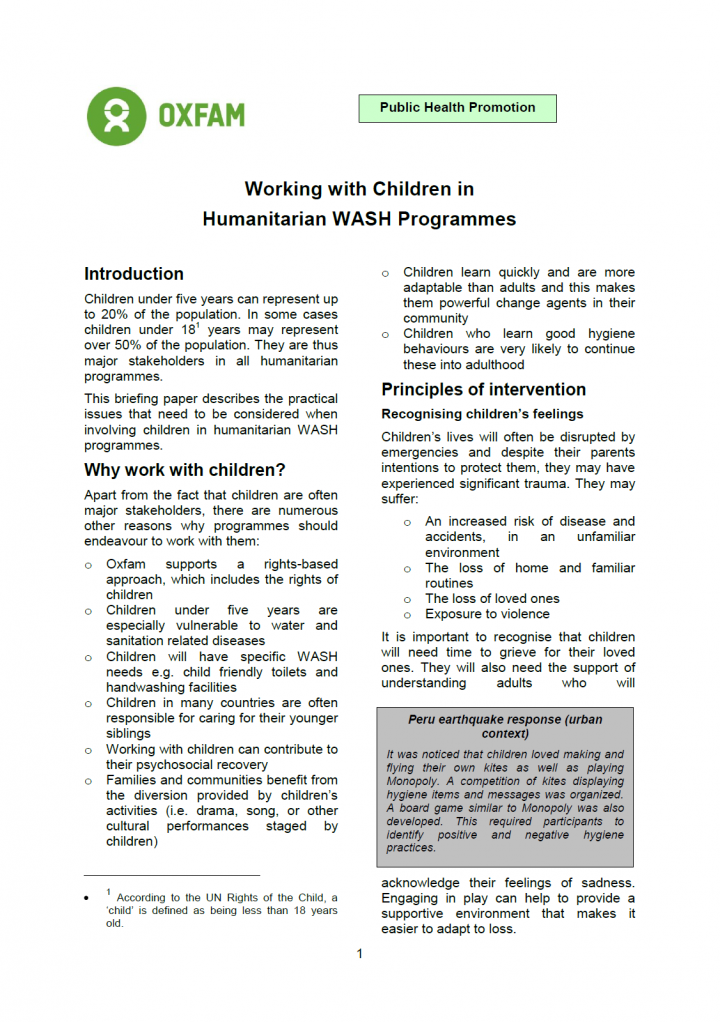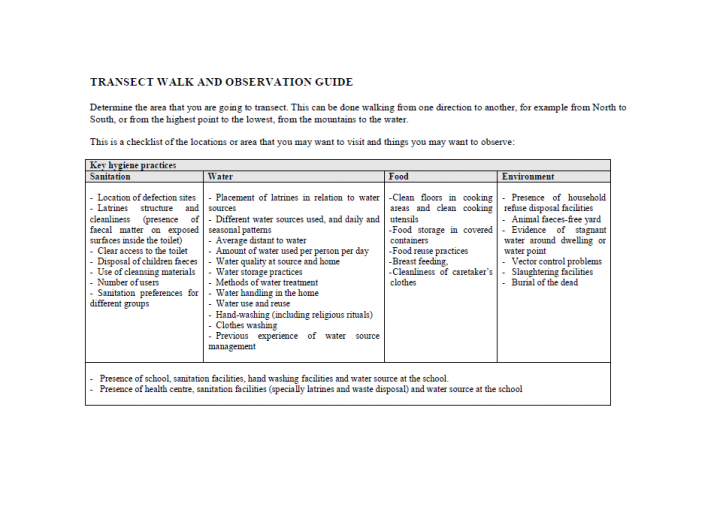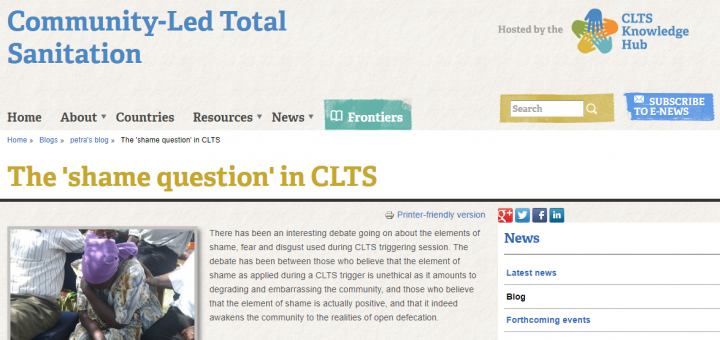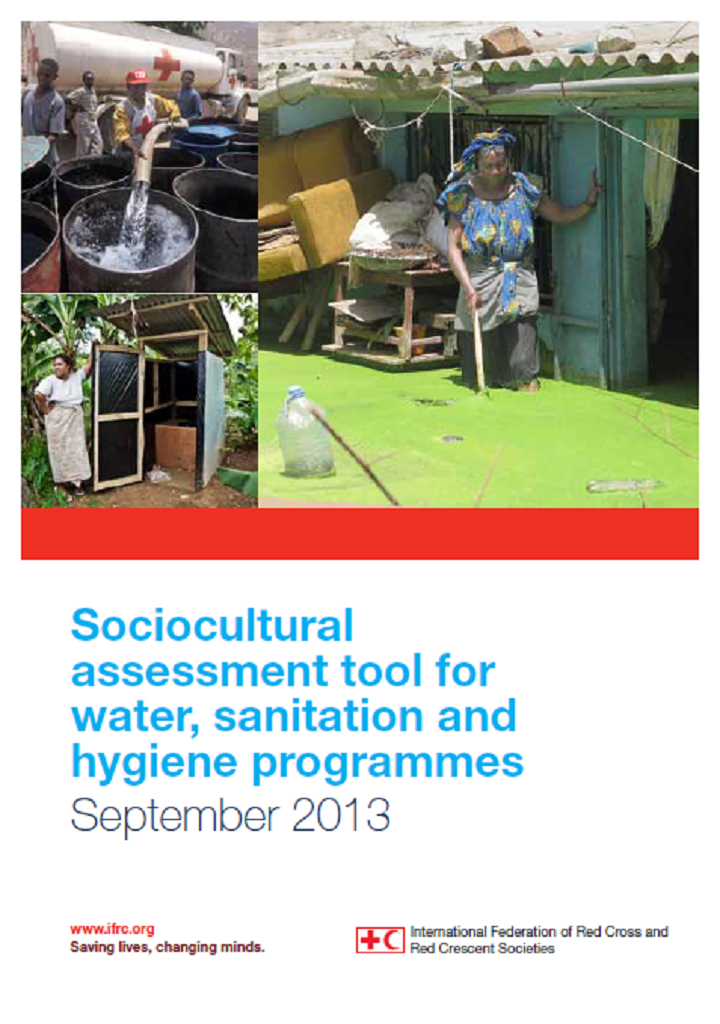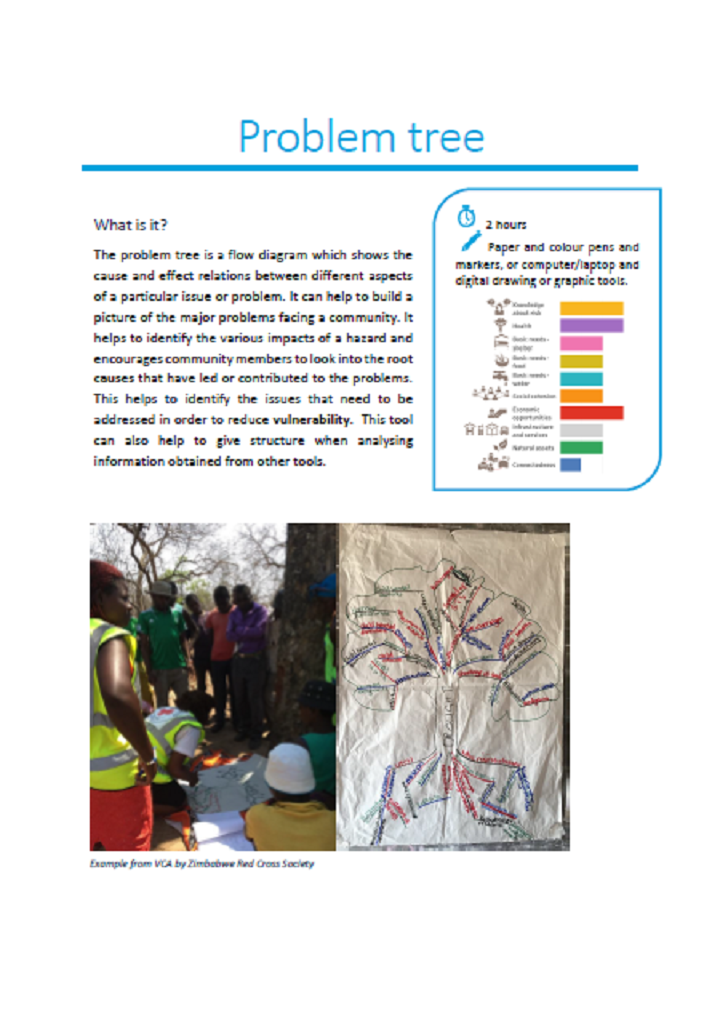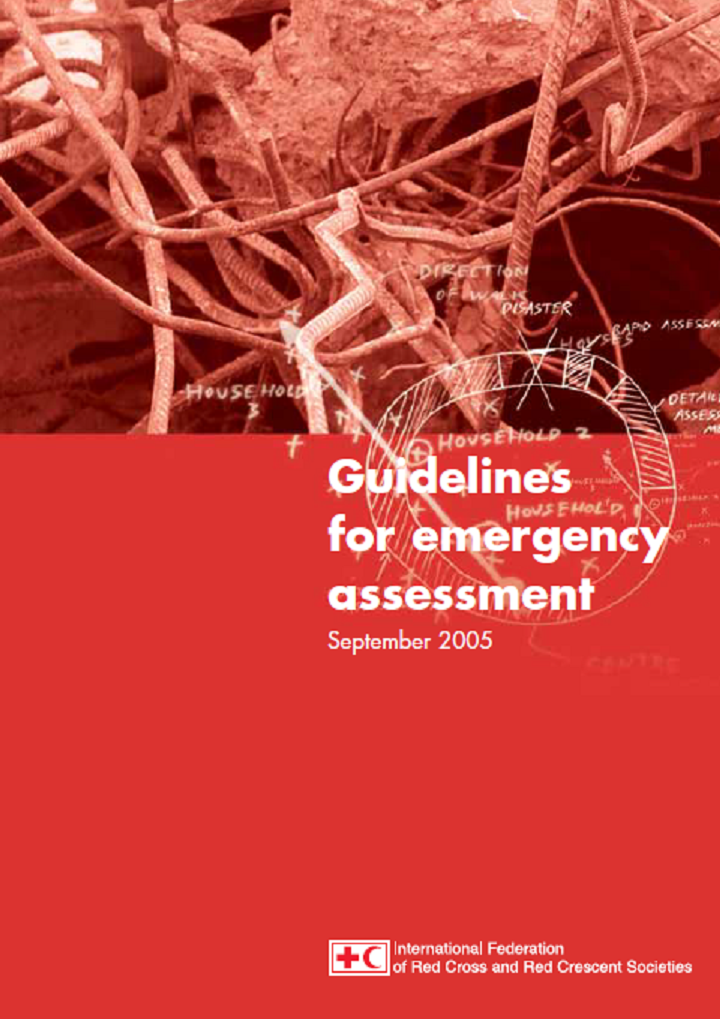Searching for information on Sanitation Workers?
The Sanitation Workers Knowledge + Learning Hub is the best source for all current news, trends, articles and updates on sanitation workers rights around the world.
A Venn diagram is a drawing, in which circular areas represent groups of items sharing common properties. Venn diagrams can be used to collect social data by using circles to show the links or relationships between different parts of a community or institution. A Venn diagram in the context of a VCA is used to examine similarities and differences between institutions, partners, people and issues …
The WG Short Set of six questions on functioning for use on national censuses and surveys was developed, tested and adopted by the Washington Group on Disability Statistics (WG). The questions reflect advances in the conceptualization of disability and use the World Health Organization’s International Classification of Functioning, Disability, and Health (ICF) as a conceptual framework.
In a …
Oxfam and Unilever’s Chief Sustainability Office carried out extensive research on handwashing practice in emergency contexts. We found nurture to be one of the most powerful motivators driving handwashing with soap among mothers. Even during a crisis, mothers continue to nurture their children to ensure they go onward in life and succeed in bringing fruition to their efforts and fulfillment …
The Participation Handbook for humanitarian field workers contains detailed practical advice on the participation of affected people in humanitarian action. It has three sections: Developing a participatory approach (main issues, key factors, building mutual respect, communication methods and advice on reviewing your approach); Implementing your participatory approach at every stage of the …
Handwashing promotion programmes in emergencies are important, as they significantly contribute to the reduction of diarrhoea-related diseases. These programmes traditionally focus on the health benefits of handwashing as a key motivator. Information – in the form of messages – is delivered to beneficiaries about the key times to wash hands and how doing this at certain times can reduce …
The Americas Regional Office of the International Federation of Red Cross and Red Crescent Societies (IFRC), through its Zika Response Team, has adapted an interactive toolkit and teaching guides for Zika, Dengue and Chikungunya Prevention to the regional context by translating the materials to Spanish and adding a Seasonal Calendar for Vector Control to the toolkit. Additionally, the Zika …
It is now well accepted that despite source water being safe, water can be contaminated during transportation and storage and the hygienic handling of water during transport, storage and use is an important aspect of hygiene promotion in all WASH interventions
In an emergency, it may not always be possible to ensure that the source water is clean (within the existing budget or time …
The overall aim of Oxfam’s WASH response in emergencies is to minimise public health risks in relation to water, sanitation and hygiene. This means working more directly with a wide range of people affected by the crisis to better understand them, to motivate them to make positive behaviour changes, and to strengthen their capacity to reduce/prevent public health risks and make their own …
This toolbox looks at different participatory investigative tools that can be used by National Society staff and volunteers to accomplish a successful VCA. As shown in the diagram below, it forms part of a comprehensive four-part series of publications addressing all aspects of VCA.
A transect walk involves walking through the community to observe and discuss the daily activities, the surroundings and the risks and resources. It is used to note the sites and topography of the area, to understand interrelationships based on space. It is a useful exercise to do in the assessment stage to get a feeling for the issues and capacities which exist in a community. In the programming …
Children under five years can represent up to 20% of the population. In some cases children under 18 years may represent over 50% of the population. They are thus major stakeholders in all humanitarian programmes. This briefing paper describes the practical issues that need to be considered when involving children in humanitarian WASH programmes.
There has been an interesting debate going on about the elements of shame, fear and disgust used during CLTS triggering session. The debate has been between those who believe that the element of shame as applied during a CLTS trigger is unethical as it amounts to degrading and embarrassing the community, and those who believe that the element of shame is actually positive, and that it indeed …
1.1 Why is an assessment methodology necessary?
Assessment is a vital element of the programme-planning process. Assessment provides the information on which decisions will be made. Whilst good information does not guarantee a good programme, poor information almost certainly guarantees a bad one. The use of a standard methodology means that information can be compared with data collected during …
What difference are we making? How do we know? The Good Enough Guide helps busy field workers to address these questions. It offers a set of basic guidelines on how to be accountable to local people and measure programme impact in emergency situations.
Its 'good enough' approach emphasises simple and practical solutions and encourages the user to choose tools that are safe, quick, and easy to …

